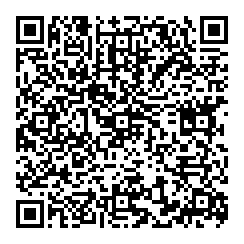The Command Line In 2004 is an annotated version of Neal Stephenson’s “In the Beginning was the Command Line.”. Garrett Birkel got permission to update it with annotations.
See my previous entry on the Stephenson original at, grockwel: Research Notes: Stephenson: In the beginning was the command line. This is from Slashdot.
Advice for College Students
Joel on Software – Advice for Computer Science College Students is an essay by a programmer about what computer science students should do when in college. Good common sense written in an amusing voice. I wonder what similar advice for humanities students would be?
Continue reading Advice for College Students
nfg games
NFG Games Nintendo Official Magazine Present – A Mario Sprite History is a cute story about the evolution of the Mario character on the Nintendo game platform. This is from a neat news/blog site I discovered on gaming called nfg.2y.net – Games Division. The author claims it is not news, but more fact, analysis and opinion – in other words longer articles less often.
QR Codes

James, a graduate of our Multimedia program who is working in Japan came by for a visit and showed me his cell phone and the cool things it can do. Besides controlling things like a Karioke player with the IR port and being an MP3 player, it can scan QR Codes which are two-dimensional barcodes. The barcodes are showing up all over – in magazines to provide a coupon or a URL, on business cards so that you can scan in a person’s contact information, and on screens. The scanning software lets you scan multiple 2D barcodes and then can merge the data into one file so you can suck up little programs for your phone. Above all it seems quite robust – both the QR Code system and, for that matter, the regular OCR with the camera that lets you scan English text.
If you want to try it, this QR Code Generator lets you generate the barcodes. The code above is my contact information encoded for the Vodafone scanner. For more on QR Code see QR Code features or qrcode.com. According to their site, there is no licensing fee to use QR Codes, which may explain why it is taking off.
Continue reading QR Codes
Perimeter Institute
The BlackBerry Brain Trust is an article in Wired, Issue 13.01, by Duff McDonald about the Perimeter Institute for Theoretical Physics that was set up in Waterloo with funding from Mike Lazaridis of RIM. Here is what the article says about the new building:
Made largely of patterned glass, the 65,000-square-foot complex has a soaring atrium, multiple fireplaces, a bistro, a squash court, and a 205-seat auditorium for lectures and string quartet performances. It looks more like a resort than a think tank where some of the smartest people in the world are contemplating the foundations of quantum physics. The elegant structure answers the question (as the architect put it), How do you design a place in which to think?
Good question! How do you design a place to learn and discover?
Continue reading Perimeter Institute
Canadian Centre of Arts and Technology (CCAT)
Canadian Centre of Arts and Technology is a resarch centre at Waterloo with a number of interesting projects in the early phase. From the sounds of this press release, UW’s new centre studies human response to technology, Waterloo is investing in this area with funds and CRC chairs.
Continue reading Canadian Centre of Arts and Technology (CCAT)
Pew Internet & American Life Project
While it has a long name, the Pew Internet & American Life Project seems to be conducting interesting and relevant surveys of Internet usage. In particular they have a report on Artists, Musicians and the Internet and a new one on the The state of blogging. The reports are in PDF format.
Public Structure
Jared Tarbell and colleagues at Levitated do some very cool Flash “toys”. One neat project that shows how Flash can be used to create multiuser spaces is Public Structure | a collaborative computational environment. Some of their work has been exhibited, including the I’Ching Poetry Generator, a Levitated exhibition. I find his/their work achingly beautiful.
Arizona: Arts, Media and Engineering (Again)
Herberger College of Fine Arts is the college at Arizona State University for arts, theatre, music and dance that is collaborating with the school of engineering on the Arts, Media and Engineering research and education program that I blogged before. (See Arizona State: Arts, Media and Engineering.)
It looks like they have MFAs in Art, Dance and Theatre (and PhD in Music) each of which can have a concentration in “Interdisciplinary Digital Media” or “Interdisciplinary Digital Media and Performance”.
Chatonsky: Aesthetics of Interactivity
In issue three of intermÈdialitÈs, new journal about “history and theory of the arts, letters, and techniques”, there is an original article, Le centre d’indÈtermination : une esthÈtique de l’intÈractivitÈ by GrÈgory Chatonsky.
In it Chatonsky presents an theory of interactivity riffing on Bergson (the journal issue is titled “devenir-bergson”) and how the body is the possibility of causality and the new. He connects this to interactive art where what is new is that the “spect-acteur” have to move to cause the aesthetic experience.